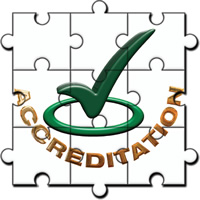The 2013 HME Handbook: Accreditation
Crossing T's and Dotting I's
How to leverage accreditation policies and procedures to maximize compliance.
 Compliance and documentation have become the watchwords of HME provider businesses. With the Centers for Medicare and Medicaid Services having invested heavily in its program integrity efforts, claims are being put through the wringer in an effort to prevent fraud and abuse. This means auditing contractors are picking through claims with a finetoothed comb, and providers must work double-time to ensure that their documentation policies and procedures are rock-solid so that their claims are clean as a whistle.
Compliance and documentation have become the watchwords of HME provider businesses. With the Centers for Medicare and Medicaid Services having invested heavily in its program integrity efforts, claims are being put through the wringer in an effort to prevent fraud and abuse. This means auditing contractors are picking through claims with a finetoothed comb, and providers must work double-time to ensure that their documentation policies and procedures are rock-solid so that their claims are clean as a whistle.
The question is, how can providers implement these documentation policies and procedures across the organization in an effective way? A key tool for accomplishing this is the accreditation process.
Accreditation became a must for any HME provider billing Medicare, with providers engaged in a headlong dash to the accreditation finish line back in 2009. Fast-forward to today, and accreditation is a regular part of doing business. But it also is an important resource, because it gives providers a variety of tools for ensuring adherence to documentation requirements that will help them protect claims from being audited, and quickly respond to any auditor requests when they happen.
Bearing this in mind, providers should leverage their regular accreditation renewal to review their documentation polices and procedures so that they can maximize their compliance. And, even if the provider isn’t due for an accreditation renewal any time soon, there is a good chance it will be able to work with its accrediting organization on a consultative business to review its documentation practices and workflows and implement any changes as necessary.
Let’s review some of the ways in which accreditation and documentation policies and procedures can be implemented through the HME provider organization to ensure compliance:
Start with the team. The first step in ensuring that proper compliance is applied throughout the business is to get the employees that constitute that business n on-board with a company-wide compliance program. Management should communicate the program to the entire organization so that all employees understand the objectives and the plan for achieving them. Outline why your business is doing this; what changes will be implemented; what new policies will be required; how the process will work; and how workflows might change. Explain how it might be different from before; and specify how the process will impact each department and what will be required of team members in those departments.
This means that a training program will be essential. Since the organization is expanding or revising its standards and practices, staff will need to be trained in the new policies and procedures being put in place. This could even involve obtaining new or revised third-party credentials. Management should ensure all staff has the necessary certifications and licensure, and that those credentials are up to date and have sufficient CEUs. Also, don’t be afraid to implement strong document compliance expectations and test staff members until they pass with flying colors.
Identify internal champions and enlist their help. There will be expert team members within the provider organization that thoroughly understand the needed documentation policies and procedures and are familiar with how they fit into Medicare accreditation requirements, as well. These team members are a provider’s most powerful allies in fostering and implementing company-wide compliance. Use them on a department-by-department basis to review workflows, determine how procedures need to change, and implement the necessary changes.
Implement a site survey of your own. As any provider that has been through the accreditation process knows, a site survey is the final measure of whether or not the business is adhering to its compliance requirements. So why not implement a “site survey” of your own? Internal experts can help implement this effort and leverage it to assess business processes in the same way a site inspector would measure proper compliance. And of course, if accreditation is up for renewal, the business will already be undergoing the Real McCoy. If that’s the case, leverage your preparations for a bona fide site survey to further implement your efforts to solidify company-wide compliance.
Points to take away:
- Documentation is a critical element of provider businesses, and the accreditation process helps ensure compliance.
- Providers should set company wide documentation expectations and work to train all team members to ensure they can accomplish them.
- Enlist the help of expert employees to act as internal champions to help implement a company-wide compliance program.
- If accreditation isn’t due any time soon, consider implementing a mock site survey to gauge company compliance.
Learn More:
Here’s a quick list of the Medicare accrediting organizations that can help providers ensure compliance:
- Accreditation Commission for Health Care Inc. (achc.org)
- American Board for Certification in Orthotics & Prosthetics Inc. (abcop.org)
- Board of Certification in Pedorthics (abcop.org)
- Board for Orthotist/Prosthetist Certification (bocusa.org)
- Commission on Accreditation of Rehabilitation Facilities (carf.org)
- Community Health Accreditation Program (chapinc.org)
- The Compliance Team Inc. (expemplaryprovider.com)
- Healthcare Quality Association on Accreditation (hqaa.org)
- Joint Commission on Accreditation of Healthcare Organizations (jcaho.org)
- National Association of Boards of Pharmacy (www.nabp.net)
- National Board of Accreditation for Orthotic Suppliers (nbaos.org)
This article originally appeared in the June 2013 issue of HME Business.